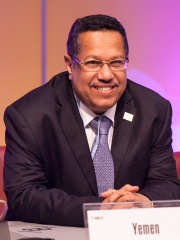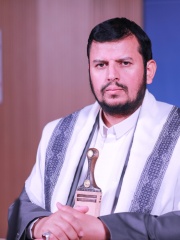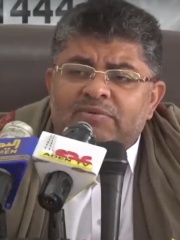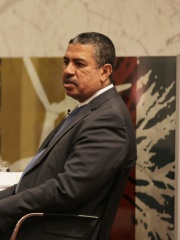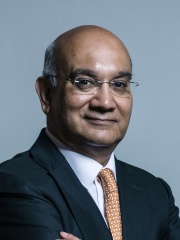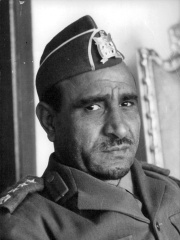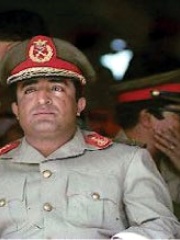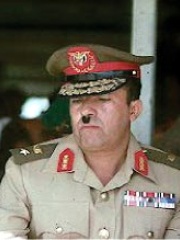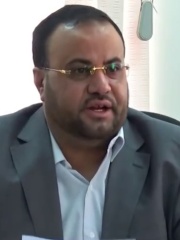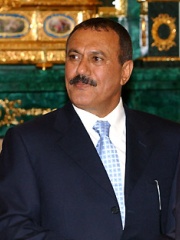


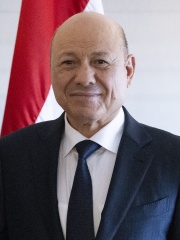
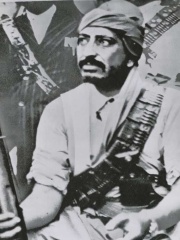
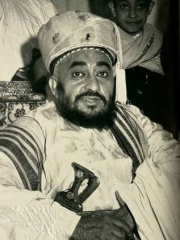

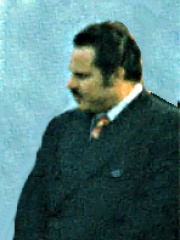
The Most Famous
POLITICIANS from Yemen
This page contains a list of the greatest Yemeni Politicians. The pantheon dataset contains 15,577 Politicians, 12 of which were born in Yemen. This makes Yemen the birth place of the 134th most number of Politicians behind Zimbabwe, and Mozambique.
Top 10
The following people are considered by Pantheon to be the top 10 most legendary Yemeni Politicians of all time. This list of famous Yemeni Politicians is sorted by HPI (Historical Popularity Index), a metric that aggregates information on a biography’s online popularity. Visit the rankings page to view the entire list of Yemeni Politicians.

1. Ali Abdullah Saleh (1947 - 2017)
With an HPI of 71.19, Ali Abdullah Saleh is the most famous Yemeni Politician. His biography has been translated into 74 different languages on wikipedia.
Ali Abdullah Saleh al-Ahmar (Arabic: , ʿAlī ʿAbdullāh Ṣāliḥ al-Aḥmar; 21 March 1942 – 4 December 2017) was a Yemeni politician who served as the first President of the Republic of Yemen, from Yemeni unification on 22 May 1990, to his resignation on 27 February 2012, following the Yemeni Revolution. Previously, he had served as President of the Yemen Arab Republic, or North Yemen, from July 1978, to 22 May 1990, after the assassination of President Ahmad al-Ghashmi. Saleh developed deeper ties with Western powers, especially the United States, during the War on Terror. Islamic terrorism may have been used and encouraged by Ali Abdullah Saleh in order to win Western support and for disruptive politically motivated attacks. In 2011, in the wake of the Arab Spring, which spread across North Africa and the Middle East (including Yemen), Saleh's time in office became increasingly precarious, until he was eventually ousted as President in 2012. He was succeeded by Abdrabbuh Mansur al-Hadi, who had been serving as vice president since 1994, and acting president since 2011. In May 2015, Saleh openly allied with the Houthis (Ansar Allah) during the Yemeni Civil War, in which a protest movement and subsequent insurgency succeeded in capturing Yemen's capital, Sanaa, causing President Abdrabbuh Mansur al-Hadi to resign and flee the country. In December 2017, he declared his withdrawal from his coalition with the Houthis and instead sided with his former enemies – Saudi Arabia, the United Arab Emirates and President al-Hadi. On 4 December 2017, during a battle between Houthi and Saleh supporters in Sanaa, the Houthis accused Saleh of treason, and he was killed by a Houthi sniper. Reports were that Saleh was killed while trying to flee his compound in a car; however, this was denied by his party officials, who said he was executed at his house.

2. Abdrabbuh Mansur Hadi (b. 1945)
With an HPI of 69.76, Abdrabbuh Mansur Hadi is the 2nd most famous Yemeni Politician. His biography has been translated into 59 different languages.
Abdrabbuh Mansur Hadi (Arabic: عبدربه منصور هادي, romanized: ʿAbd Rabbih Manṣūr Hādī Yemeni pronunciation: [ˈʕæb.də ˈrɑb.bu mɑnˈsˤuːr ˈhæːdi]; born 1 September 1945) is a Yemeni politician and former field marshal of the Yemeni Armed Forces who served as the president of Yemen from 2012 until 2022, when he stepped down and transferred executive authority to the Presidential Leadership Council, with Rashad al-Alimi as its chairman. He was the vice president to Ali Abdullah Saleh from 1994 to 2012. Between 4 June and 23 September 2011, Hadi was the acting president of Yemen while Ali Abdullah Saleh was undergoing medical treatment in Saudi Arabia following an attack on the presidential palace during the 2011 Yemeni uprising. On 23 November, he became Acting President again, after Saleh moved into a non-active role pending the presidential election "in return for immunity from prosecution". Hadi was "expected to form a national unity government and also call for early presidential elections within 90 days" while Saleh continued to serve as president in name only. Mansour Hadi was chosen as a president for a two-year transitional period on 21 February by Yemen's political factions, in an election where he was the sole consensus candidate, although the election was boycotted by Houthis in the north and Southern Secessionists in the south of the country. Hadi's mandate was extended for another year in January 2014. According to pro-Houthi media outlet SABA, Hadi remained in power after the expiration of his mandate. On 22 January 2015, he was forced to resign by the Houthis in the midst of mass protest against his decision to raise the fuel subsidies and due to dissatisfaction with the outcome of the 2011 Revolution. Subsequently, the Houthis and the supporters of Saleh seized the presidential palace and placed Hadi under house arrest. The Houthis named a Revolutionary Committee to assume the powers of the presidency, as well as unify with the General People's Congress, Hadi's own political party. A month later, Hadi escaped to his hometown of Aden, rescinded his resignation, and denounced the Houthi takeover. He arrived in Riyadh the next day, as a coalition of countries led by Saudi Arabia intervened in support of his government. He returned to Aden in September 2015, as Saudi-backed government forces recaptured the city. In late 2017, he was reportedly residing in Riyadh under house arrest. In 2022, Hadi transferred his powers to a newly formed Presidential Leadership Council led by Rashad al-Alimi which would seek a political solution to Yemen's civil war. This came amid a broader push for peace with Saudi Arabia. Multiple sources in the Saudi and Yemeni governments alleged that he had been forced to cede power by the Saudis.

3. Abu Musa al-Ash'ari (600 - 666)
With an HPI of 64.08, Abu Musa al-Ash'ari is the 3rd most famous Yemeni Politician. His biography has been translated into 26 different languages.
Abu Musa Abd Allah ibn Qays al-Ash'ari (Arabic: أبو موسى عبد الله بن قيس الأشعري, romanized: Abū Mūsā ʿAbd Allāh ibn Qays al-Ashʿarī), better known as Abu Musa al-Ash'ari (Arabic: أبو موسى الأشعري, romanized: Abū Mūsā al-Ashʿarī) (died c. 662 or 672) was a companion of Muhammad and an important figure in early Islamic history. He was at various times governor of Basra and Kufa and was involved in the early Muslim conquest of Persia.

4. Rashad al-Alimi (b. 1954)
With an HPI of 58.47, Rashad al-Alimi is the 4th most famous Yemeni Politician. His biography has been translated into 20 different languages.
Rashad Muhammad al-Alimi (Arabic: رشاد محمد العليمي, romanized: Rashād Muḥammad al-ʻUlaymī; born 15 January 1954) is a Yemeni politician currently serving as the chairman of the Presidential Leadership Council since 7 April 2022.
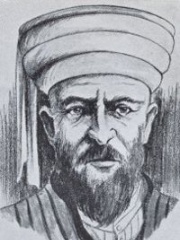
5. Yahya Muhammad Hamid ed-Din (1869 - 1948)
With an HPI of 58.37, Yahya Muhammad Hamid ed-Din is the 5th most famous Yemeni Politician. His biography has been translated into 23 different languages.
Yahya Muhammad Hamid ed-Din (or Imam Yahya) (Arabic: يحيى محمد حميد الدين, 18 June 1869 – 17 February 1948) was the first king of the Mutawakkilite Kingdom of Yemen from 1918 until his assassination in 1948. He became Imam of the Zaydis in 1904 after the death of his father, Muhammad Al-Mansur, and Imam of Yemen in 1918. His name and title in full was "His majesty Amir al-Mumenin al-Mutawakkil 'Ala Allah Rab ul-Alamin Imam Yahya bin al-Mansur Bi'llah Muhammad Hamidaddin, Imam and Commander of the Faithful" (the prince of the believers, he who relies on God, the Lord of the Universe). Yahya Muhammad Hamid ed-Din was born on Friday 18 June 1869 in Sanaa into the Hamidaddin branch of the al-Qasimi dynasty who ruled most of Yemen proper and the southern region of present-day Saudi Arabia for over 900 years. When Yahya became Imam, he effectively ruled over the mountainous areas of what will be North Yemen. However, the Ottomans who made claims in the area did not recognize the rule of the Imams of Yemen since their entry into the region. He spent the early years of his reign attempting to expel the Ottoman presence, who withdrew after their defeat in World War I. A staunch isolationist, Imam Yahya never traveled outside of Yemen, and is said to have never left the Sanaa highlands or seen the Red Sea on his kingdom's coast.

6. Muhammad al-Badr (1926 - 1996)
With an HPI of 57.29, Muhammad al-Badr is the 6th most famous Yemeni Politician. His biography has been translated into 23 different languages.
Muhammad Al-Badr (15 February 1926 – 6 August 1996) (Arabic: المنصور بالله محمد البدر بن أحمد) was the last king and Zaidi Imam of the Mutawakkilite Kingdom of Yemen (North Yemen) and leader of the monarchist regions during the North Yemen Civil War (1962–1970). His full name was Al-Mansur Bi'llah Muhammad Al-Badr bin Al-Nasir-li-dinu'llah Ahmad, Imam and Commander of the Faithful and King of the Mutawakkilite Kingdom of Yemen.

7. Ahmad bin Yahya (1891 - 1962)
With an HPI of 54.32, Ahmad bin Yahya is the 7th most famous Yemeni Politician. His biography has been translated into 16 different languages.
Ahmad bin Yahya Hamidaddin (Arabic: أحمد بن يحيى حميد الدين; June 18, 1891 – September 19, 1962) was the penultimate king of the Mutawakkilite Kingdom of Yemen, who reigned from 1948 to 1962. His full name and title was H.M. al-Nasir-li-Dinullah Ahmad bin al-Mutawakkil 'Alallah Yahya, Imam and Commander of the Faithful, and King of the Mutawakkilite Kingdom of the Yemen. Ahmad's ruthless, arbitrary and inconsistent rule made him the subject of a coup attempt, frequent assassination attempts and eventually lead to the downfall of the kingdom shortly after his death. His enemies ranged from ambitious family members to forward-looking pan-Arabists and Republicans and from them he was given the name "Ahmad the devil." He remained surprisingly popular among his subjects, particularly the northern tribesmen from whom he had the name "Big Turban". For his remarkable ability to narrowly escape numerous assassination attempts, he was known as al-Djinn. Like his father, Ahmad was profoundly conservative, but nevertheless forged alliances with the Soviet Union, Communist China and the Republic of Egypt, all of which provided economic and military aid to the kingdom. These alliances were largely driven by his desire to expel the British from southern Yemen and recover the territory of the Aden Protectorate as part of "Greater Yemen". In the end, he turned against Egypt and the Soviet Union, both of which after his death supported a republican coup against his son and successor.

8. Hussein al-Houthi (1960 - 2004)
With an HPI of 53.93, Hussein al-Houthi is the 8th most famous Yemeni Politician. His biography has been translated into 18 different languages.
Hussein Badreddin al-Houthi (also spelled Hussein Badr Eddin al-Houthi, or Hussein Badr al-Din al-Houthi; Arabic: حسين بدر الدين الحوثي; 20 August 1959 – 10 September 2004) was a Yemeni Zaidi religious, political and military leader, as well as former member of the Yemeni parliament for the Party of Truth between 1993 and 1997. He was instrumental in the Houthi insurgency against the Yemeni government, which began in 2004. Al-Houthi, who was a one-time rising political aspirant in Yemen, had wide religious and tribal backing in northern Yemen's mountainous regions. The Houthi movement took his name after his assassination in 2004.

9. Ali Nasir Muhammad (b. 1940)
With an HPI of 53.46, Ali Nasir Muhammad is the 9th most famous Yemeni Politician. His biography has been translated into 17 different languages.
Ali Nasir Muhammad Al-Husani (Arabic: علي ناصر محمد الحسني; born 31 December 1939, in Mudiyah, Mutawakkilite Kingdom of Yemen) is the former leader of South Yemen serving as General Secretary of the Yemeni Socialist Party between 1980 and 1986. He was twice president of South Yemen and once the Prime Minister. He served as the Prime Minister from 2 August 1971 until 14 February 1985 and as Chairman of the Presidential Council from 26 June 1978, after overthrowing and executing Salim Rubai Ali, until 27 December 1978. In April 1980, South Yemeni president Abdul Fattah Ismail resigned, officially due to health reasons, and moved to Moscow. His successor was Ali Nasir Muhammad, who was generally seen as a more pragmatic and moderate leader than his predecessor. Mohammad was less committed to Marxist-Leninist ideology than Ismail and relaxed various socialist policies in the PDRY. His rule was also marked by his moderate approach towards foreign affairs, as evidenced by his less invertentionist stance towards both North Yemen and neighbouring Oman and attempts to improve relations with the West. On January 13, 1986, a violent struggle began in Aden between Ali Nasir's supporters and supporters of the returned Ismail, the South Yemen Civil War. Fighting lasted for more than a month and resulted in thousands of casualties, Ali Nasir's ouster, and Ismail's death. Muhammad's term had lasted from 21 April 1980 to 24 January 1986. Some 60,000 people, including the deposed Ali Nasir, fled to North Yemen. He was succeeded by Haidar Abu Bakr al-Attas. Mohammed was a member of the National Front, ar. الجبهة القومية (NF) as well as the Yemeni Socialist Party (YSP - الحزب الاشتراكي اليمني) after the YSP was formed from the UPONF in October 1978. During the 1994 Civil War in Yemen, he pushed his supporters to operate alongside the forces of Sana'a government and against the recently re-established Democratic Republic of Yemen, seeking revenge for his ouster. The southern secession was repressed in July 1994 after the surrender of Aden and Mukalla strongholds. The former president became an opposition figure in the 2011 Yemeni uprising, being named to a 17-member transitional council intended by some anti-government factions to govern Yemen during a prospective transition from the authoritarian regime led by President Ali Abdullah Saleh to a plural democracy. This council was opposed by the Joint Meeting Parties, the main opposition coalition, which also supported Saleh's removal from power and a transition to democracy. In February 2015, there were media reports that Muhammad was being considered as a prospective interim leader of a "presidential council" after the collapse of the government.
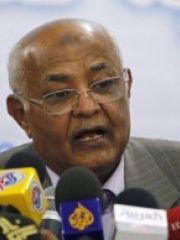
10. Mohammed Basindawa (b. 1935)
With an HPI of 52.86, Mohammed Basindawa is the 10th most famous Yemeni Politician. His biography has been translated into 26 different languages.
Mohammed Salim Basindawa (Arabic: محمد سالم باسندوة born 4 April 1935) is a Yemeni politician who was Prime Minister of Yemen from 10 December 2011 to 24 September 2014.
People
Pantheon has 22 people classified as Yemeni politicians born between 600 and 1979. Of these 22, 9 (40.91%) of them are still alive today. The most famous living Yemeni politicians include Abdrabbuh Mansur Hadi, Rashad al-Alimi, and Ali Nasir Muhammad. The most famous deceased Yemeni politicians include Ali Abdullah Saleh, Abu Musa al-Ash'ari, and Yahya Muhammad Hamid ed-Din. As of April 2024, 10 new Yemeni politicians have been added to Pantheon including Rashad al-Alimi, Hussein al-Houthi, and Abdullah al-Sallal.
Living Yemeni Politicians
Go to all RankingsAbdrabbuh Mansur Hadi
1945 - Present
HPI: 69.76
Rashad al-Alimi
1954 - Present
HPI: 58.47
Ali Nasir Muhammad
1940 - Present
HPI: 53.46
Mohammed Basindawa
1935 - Present
HPI: 52.86
Ahmed Obaid Bin Dagher
1952 - Present
HPI: 47.36
Abdul-Malik al-Houthi
1979 - Present
HPI: 45.90
Mohammed al-Houthi
1979 - Present
HPI: 41.98
Khaled Bahah
1965 - Present
HPI: 41.00
Keith Vaz
1956 - Present
HPI: 29.88
Deceased Yemeni Politicians
Go to all RankingsAli Abdullah Saleh
1947 - 2017
HPI: 71.19
Abu Musa al-Ash'ari
600 - 666
HPI: 64.08
Yahya Muhammad Hamid ed-Din
1869 - 1948
HPI: 58.37
Muhammad al-Badr
1926 - 1996
HPI: 57.29
Ahmad bin Yahya
1891 - 1962
HPI: 54.32
Hussein al-Houthi
1960 - 2004
HPI: 53.93
Abdullah al-Sallal
1917 - 1994
HPI: 51.68
Haidar Abu Bakr al-Attas
1939 - Present
HPI: 51.44
Ibrahim al-Hamdi
1943 - 1977
HPI: 48.64
Ahmad al-Ghashmi
1935 - 1978
HPI: 48.14
Ali Muhammad Mujawar
1953 - Present
HPI: 47.50
Abdul Qadir Bajamal
1946 - 2020
HPI: 47.16
Newly Added Yemeni Politicians (2024)
Go to all RankingsRashad al-Alimi
1954 - Present
HPI: 58.47
Hussein al-Houthi
1960 - 2004
HPI: 53.93
Abdullah al-Sallal
1917 - 1994
HPI: 51.68
Haidar Abu Bakr al-Attas
1939 - Present
HPI: 51.44
Ibrahim al-Hamdi
1943 - 1977
HPI: 48.64
Ahmad al-Ghashmi
1935 - 1978
HPI: 48.14
Abdul-Malik al-Houthi
1979 - Present
HPI: 45.90
Mohammed al-Houthi
1979 - Present
HPI: 41.98
Khaled Bahah
1965 - Present
HPI: 41.00
Saleh Ali al-Sammad
1979 - 2018
HPI: 39.65
Overlapping Lives
Which Politicians were alive at the same time? This visualization shows the lifespans of the 9 most globally memorable Politicians since 1700.

